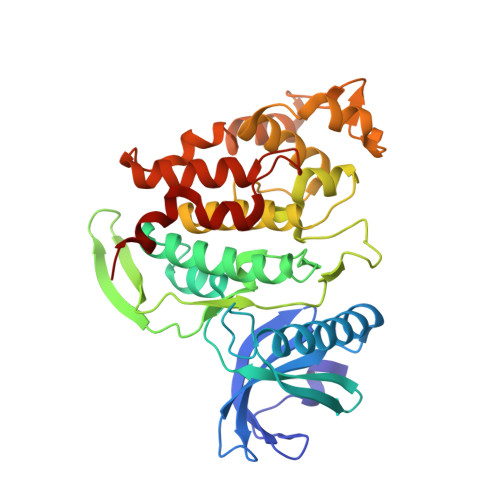DFG-1 Residue Controls Inhibitor Binding Mode and Affinity, Providing a Basis for Rational Design of Kinase Inhibitor Selectivity.
Schroder, M., Bullock, A.N., Fedorov, O., Bracher, F., Chaikuad, A., Knapp, S.(2020) J Med Chem 63: 10224-10234
- PubMed: 32787076
- DOI: https://doi.org/10.1021/acs.jmedchem.0c00898
- Primary Citation of Related Structures:
6YTA, 6YTD, 6YTE, 6YTG, 6YTI, 6YTW, 6YTY, 6YU1, 6Z2V, 6ZLN - PubMed Abstract:
Selectivity remains a challenge for ATP-mimetic kinase inhibitors, an issue that may be overcome by targeting unique residues or binding pockets. However, to date only few strategies have been developed. Here we identify that bulky residues located N-terminal to the DFG motif (DFG-1) represent an opportunity for designing highly selective inhibitors with unexpected binding modes. We demonstrate that several diverse inhibitors exerted selective, noncanonical binding modes that exclusively target large hydrophobic DFG-1 residues present in many kinases including PIM, CK1, DAPK, and CLK. By use of the CLK family as a model, structural and biochemical data revealed that the DFG-1 valine controlled a noncanonical binding mode in CLK1, providing a rationale for selectivity over the closely related CLK3 which harbors a smaller DFG-1 alanine. Our data suggest that targeting the restricted back pocket in the small fraction of kinases that harbor bulky DFG-1 residues offers a versatile selectivity filter for inhibitor design.
Organizational Affiliation:
Institute of Pharmaceutical Chemistry, Goethe-University Frankfurt, Max von Lauestra?e 9, 60438 Frankfurt, Germany.

















